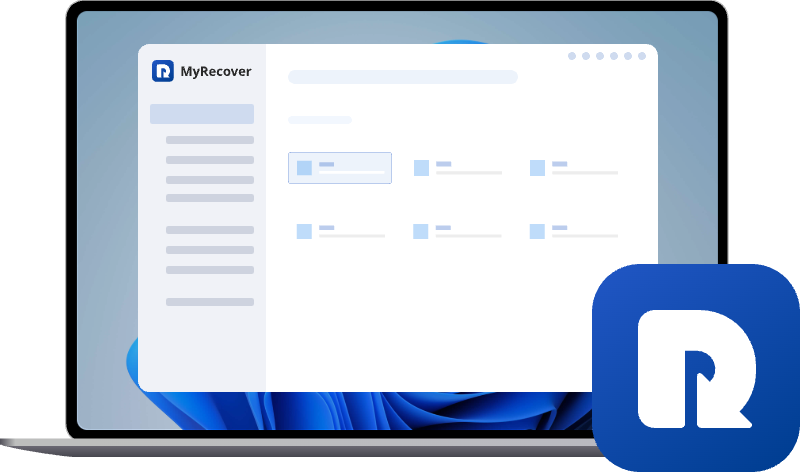Undo System Restore on Windows 11 Without Losing Data
System Restore is a powerful Windows feature that can revert your system to a previous working state, but it sometimes comes with an unwanted surprise: missing files or reverted settings. This article walks you through the complete process to undo System Restore on Windows 11 safely, ensuring no personal data loss.
Introduction
System Restore is one of Windows’ most reliable safety nets. It lets you roll back system changes if you have created a restore point, especially when updates or installations cause errors. However, there are times when restoring your system may not fix the problem, or even makes things worse. You might notice missing files, apps that no longer work, or system instability. This will be extremely frustrating for users who want to rely on System Restore to fix computer issues.
If you find yourself in this situation, don’t panic. When your computer runs into issues, you can not only use System Restore to fix some problems but also undo a system restore.
Why You Might Want to Undo a System Restore
While System Restore is designed to fix issues by rolling your Windows system back to a previous state, it doesn’t always go as planned. Sometimes, the very action meant to help can introduce new problems or fail to solve the old ones. Here are a few common reasons why you might want to undo a system restore before it causes more trouble:
💡System Instability After Restore
After performing a system restore, your computer might start behaving unpredictably: slower performance, random errors, or frequent crashes. This can happen if the restored system files conflict with newer configurations or updates that were installed afterward.
⚙️Important Software or Drivers Were Uninstalled
System Restore can remove recently installed programs or drivers that weren’t part of the selected restore point. If your device suddenly loses functionality, undoing the restore can bring them back.
📁Personal Data Appears to Be Missing
Although System Restore doesn’t typically affect personal files, some users report missing documents, photos, or desktop shortcuts after restoring. This might happen if folders were relocated or system paths were changed.
🛠️The Original Problem Persists
In some cases, the restore simply doesn’t fix what it was supposed to, whether it’s a startup error, driver issue, or software glitch. If nothing improves after the restore, it’s worth reversing the process and exploring other solutions.
Before Undoing System Restore: Essential Preparations
Before you rush to undo a system restore on Windows 11, it’s important to take a few precautionary steps. Undoing a restore can alter your system configuration again, and while the process is generally safe, it’s best to prepare your device to minimize any potential data loss or further issues. Here’s what you should do first:
🔥Back Up Important Files
Even though System Restore doesn’t usually affect personal data, unexpected errors or interruptions during the undo process can lead to file loss. You'd better back up your important files using Windows Backup tools, external hard drives or cloud backup tools like OneDrive, Google Drive.
🔥Check the Current Restore Status
Before undoing, it’s helpful to confirm what changes the last restore actually made. View the list of restore points and their timestamps. This helps you see which point your system was reverted to and plan whether undoing it is necessary.
🔥Ensure a Stable Power Supply
If you’re using a laptop, plug it into a power source before starting the undo process. Interrupting a System Restore (or undo) midway due to power loss can cause serious corruption to your Windows installation.
Once you decide to undo a system restore, it's crucial to act quickly. This is because Windows allocates limited disk space for "System Protection." When this space is full, the system automatically deletes the oldest restore points.
How to Undo System Restore on Windows 11/10
Now that you’ve prepared your system and secured your important files, you’re ready to move on to the actual process. In this section, we’ll walk through how to safely undo a System Restore, whether your PC can boot normally or you need to access it through WinRE.
Undo System Restore Using the System Restore Feature
If your computer boots normally, using Windows' System Restore feature is the simplest and most straightforward way to undo a System Restore. No professional knowledge or skills are required, just follow the steps below:
Step 1. Type "Create a restore point" in the Start menu and open it.
Step 2. Under the "System Protection" tab, click on the "System Restore" button.
Step 3. Choose the "Undo System Restore" and click "Next".
Step 4. Confirm the restore details and click "Finish" to start the process. You can click "Scan for affected programs" to see what will be changed after undoing the System Restore.
Wait for Windows to revert the changes and restart your system. After the restart, Windows will be restored to the state before the initial restore was performed.
Undo System Restore via Windows Recovery Environment (WinRE)
If Windows won’t boot at all, you can still undo the restore using Windows RE. It is especially useful when system corruption prevents Windows from launching normally. Follow these steps to undo System Restore:
Step 1. Start your PC and interrupt the boot process three times to trigger Automatic Repair.
Step 2. Choose "Advanced options" > "Troubleshoot" > "Advanced options" > "System Restore".
Step 3. Sign in your account and enter your password for it to continue. Click "Continue" to move on.
Step 4. Select the restore point which as Undo under the "Type" column and click "Next".
Step 5. Click "Finish" to start the process.
After Undoing: Verify System & Check Data Integrity
Once you’ve undone the restore, your computer should boot into its prior configuration. To ensure stability:
- Check for missing files: Review your project folders, photos, and documents.
- Test your software: Open recently used programs and confirm that they run properly.
- Scan for updates: Some drivers or security updates may need to be reinstalled.
If you notice missing data after the undo process, don’t worry. You can still recover it with the right tools.
Recover Lost Files after System Restore Undo
In rare cases, files may go missing after reversing a system restore. This could happen if temporary restore data was deleted or if the process was interrupted. In that case, the all-in-one Windows data recovery software—MyRecover can help you retrieve lost files after a system restore or undo. In addition, MyRecover also covers most Windows data loss scenarios, such as recovering data from deleted partitions, unallocated space, formatted hard drives, emptied Recycle Bins, and more.

- Intuitive interface requiring no technical expertise.
- Faster scanning compared to command-line tools.
- Work on HDD, SSD, USB flash drive, memory card, etc.
- Compatible with all Windows operating systems and Server.
Step 1. Download and install MyRecover on your computer from Microsoft Store, avoid installing it on the drive with lost files (typically it's the C drive that is affected).
Step 2. Run the program and choose the drive including lost files to scan, then click "Scan".
Step 3. Choose the files you attempt to recover from the recoverable lists and click "Recover".
Options in the Filter feature to locate files quickly:
-
Type: Different file types, such as images, videos, documents, mails, webpage, compressed files, etc. are included.
-
Data Modified: Sort files by modification time—you can choose to list them from most recent to oldest or from oldest to most recent.
-
Size: It allows you to filter file size from less than 512KB to 512KB ~10MB to 10MB~100MB and above.
-
Keyword: Type the keywords of the file name you want to recover into the search box.
Step 4. Select a safe location to save the recovered files and click "Select the folder".
When the process is finished, you'll see the message "Files have been recovered successfully". Then you can check them by clicking on the destination folder path or "Browse" button.
Conclusion
In short, undoing a System Restore might seem risky, but it’s a valuable troubleshooting option when your system behaves unpredictably after restoration. With careful preparation, verification, and the help of recovery tools, you can safely return to your previous setup without losing data.
If you need to recover more data more efficiently, MyRecover's Professional version is a worthwhile investment. It allows unlimited data recovery and previewing file contents in advance. It even can help you create data recovery bootable USB.


